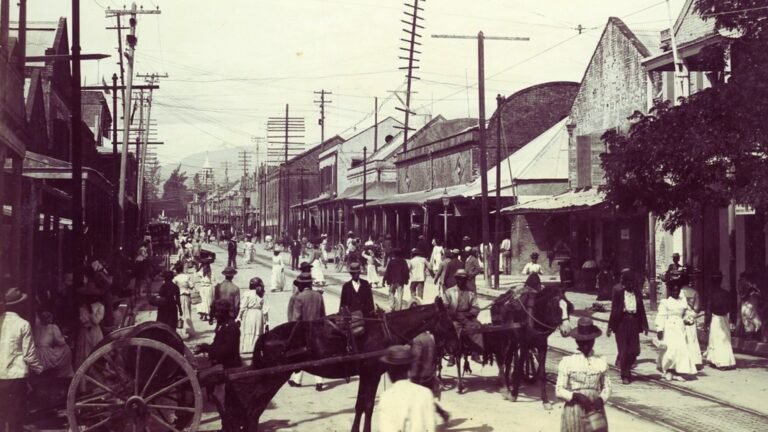Earlier than Kingston, there was Port Royal, a infamous metropolis as soon as described because the “wickedest metropolis on the earth.” House to English buccaneers like Sir Henry Morgan, Port Royal prospered from plundered Spanish wealth and served as a key naval and buying and selling submit within the Caribbean. However its infamy got here to an finish, giving solution to the rise of Kingston — a brand new settlement that might finally grow to be Jamaica’s capital metropolis and centre of energy. Under is a timeline capturing Kingston’s evolution from a spot of refuge to Jamaica’s cultural, political and industrial capital.
7 June 1692: The Day the Earth Shook
At 11:43 a.m., a robust earthquake struck Port Royal, adopted by a devastating tsunami. Round two-thirds of the town sank into the ocean, killing roughly 3,000 individuals. Survivors fled inland to the Liguanea Plain, solely to face additional hardship as many succumbed to publicity and illness.
22 July 1692: Kingston Is Established
Simply two weeks after the catastrophe, the colonial authorities moved swiftly to establish a new town. They bought 200 acres of land often known as Colonel Barry’s Hog Crawle from Sir William Beeston for £1,000. Early maps even labelled the realm as “Beeston,” a nod to the land’s former proprietor.
Surveyor John Goffe was tasked with laying out the brand new township. His grid-based plan was designed to assist commerce and facilitate motion. On 22 July, the city of Kingston was formally based, with land grants issued to settlers.
1703: Fireplace Seals Port Royal’s Destiny
Regardless of Kingston’s basis, many Jamaicans nonetheless clung to Port Royal’s status and tried to rebuild. That modified in 1703, when a significant hearth destroyed most of what had survived the earthquake, forcing residents to relocate. Many moved to Kingston, by no means to return.
That very same yr, Kingston was named Jamaica’s primary seat of commerce and the island’s head port of entry. This marked the start of its industrial dominance.
1713: Kingston Turns into a Parish
Kingston’s significance continued to develop. In 1713, it was officially recognised as a parish and granted the best to ship three representatives to the Jamaican Meeting. Its authorized and political standing now matched its financial significance.
1842–1845: Infrastructure Takes Form
By the nineteenth century, Kingston was present process regular improvement. In 1842, it acquired its first public water provide from the Hope River. Although unfiltered and restricted in attain, it served roughly 1,600 houses.
On 21 November 1845, Jamaica’s first railway opened, connecting Kingston to Spanish City. A coaling station was quickly added close to East Avenue, making the town a key cease for steamers heading to Central and South America. This elevated visitors introduced each visibility and income.

Mid-1700s: A Case for Capital Standing
Calls to make Kingston the capital of Jamaica emerged as early because the mid-18th century. Governor Admiral Charles Knowles argued that the town’s port capability exceeded all others on the island. Its location additionally facilitated brisk commerce, together with illicit dealings with Spanish colonies within the area.
Nevertheless, the proposal confronted robust opposition. Spanish City had served because the capital for over 230 years, and lots of doubted Kingston’s readiness to switch it. The British Crown in the end rejected the invoice, however momentum continued to construct.
1872: Kingston Turns into the Capital
After greater than a century of advocacy, Kingston was formally declared the capital of Jamaica in 1872. Its rising inhabitants, strategic location, and thriving economic system had lastly eclipsed Spanish City, securing Kingston’s place because the nation’s administrative and industrial coronary heart.
From Disaster to Capital
What started as an emergency response to catastrophe has grown into Jamaica’s most influential metropolis. At the moment, Kingston just isn’t solely the island’s political and financial centre, but in addition a cultural powerhouse identified the world over. Its rise from the ashes of Port Royal stands as one of the vital pivotal transformations in Jamaica’s historical past.

